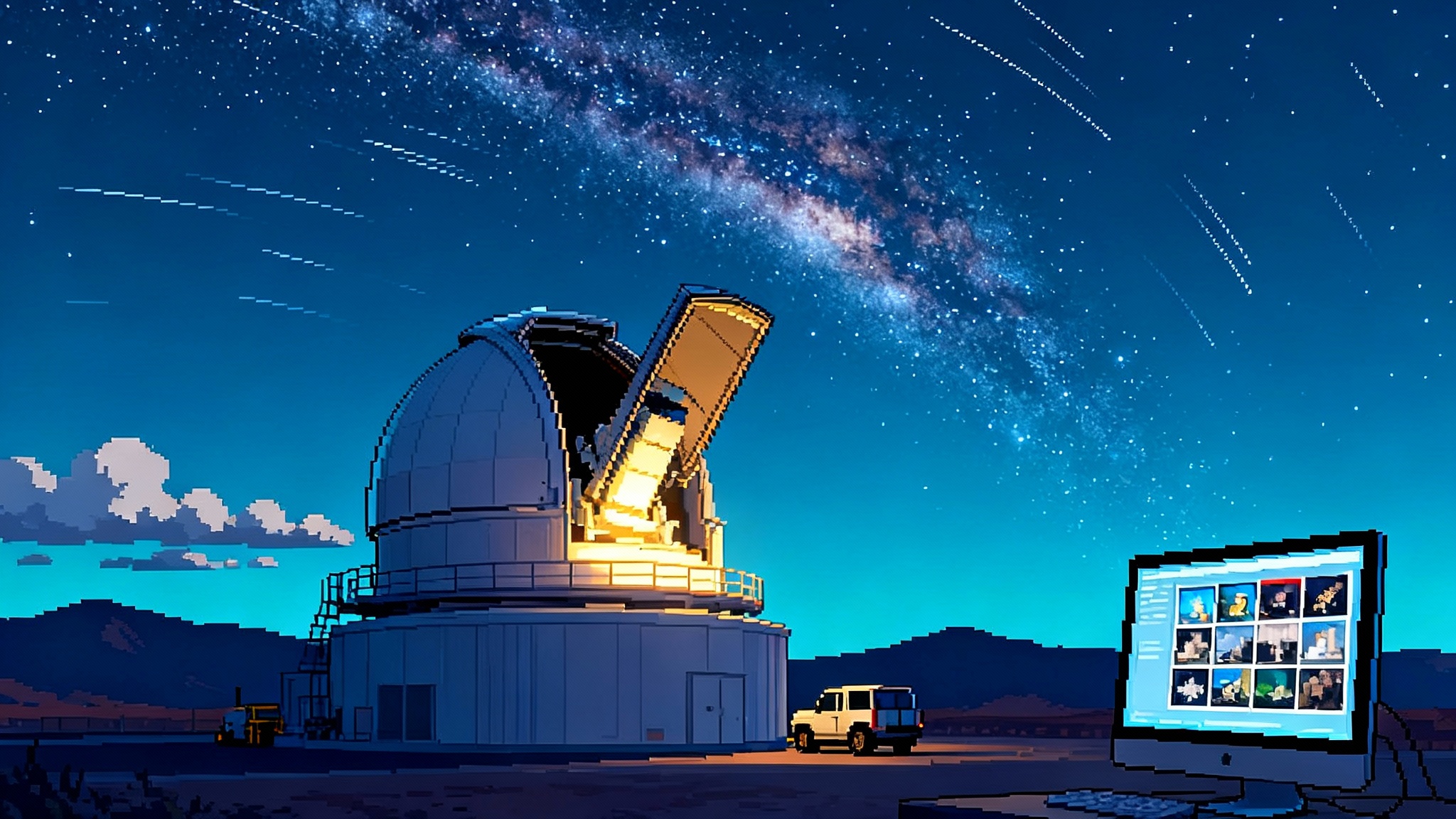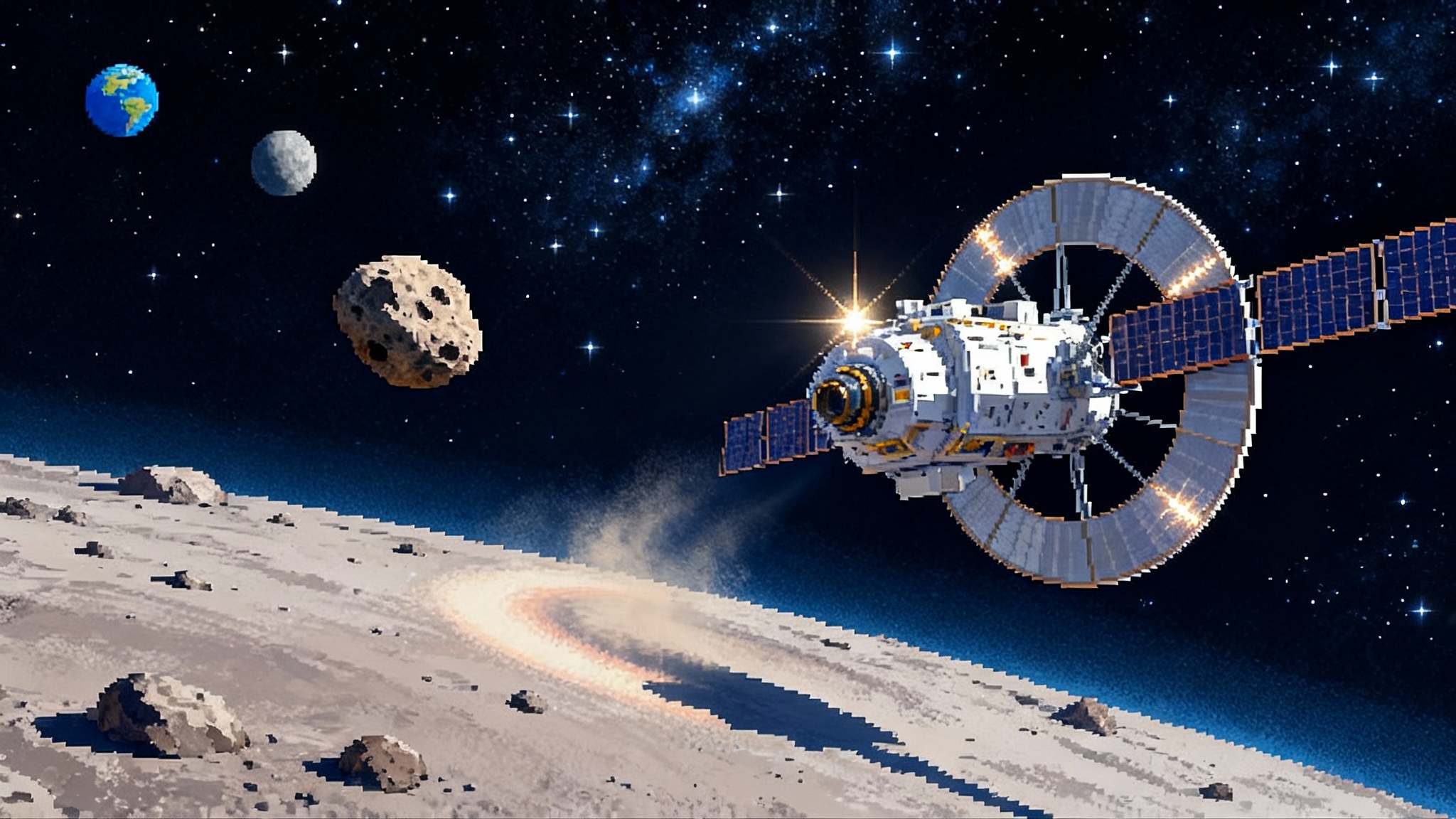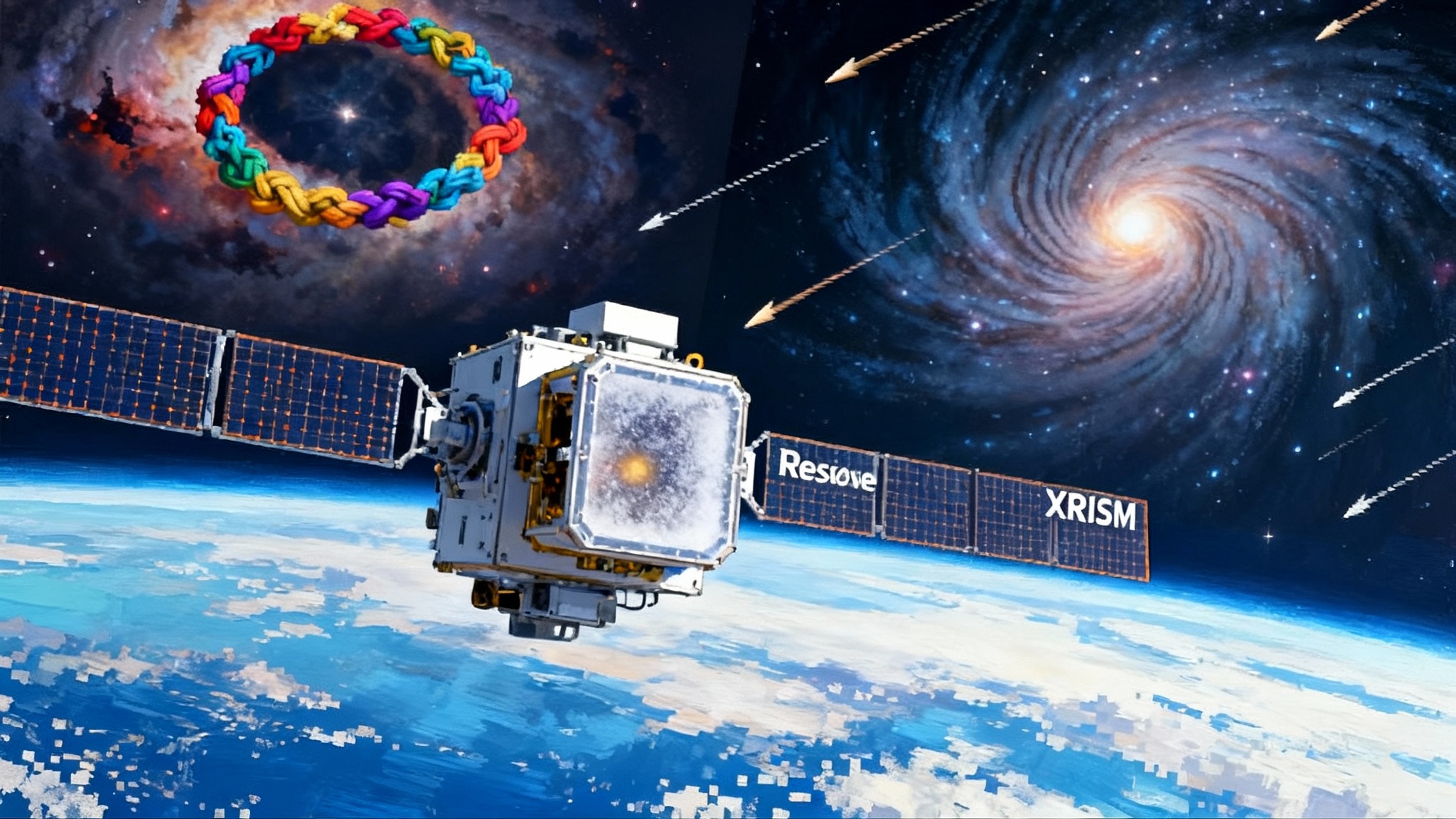From First Look to Firehose: Rubin’s Year of Fast Discovery
In June 2025 the Vera C. Rubin Observatory moved from stunning test images to the brink of a live, minute‑scale alert stream. Here is what the next 12 months will look like and how to get ready to turn alerts into discoveries.

The sky just pressed fast‑forward
On June 23, 2025 the Vera C. Rubin Observatory unveiled its first full images, including a swarm of newly found asteroids visible in the background like glitter in motion. The team reported that in about ten hours of observing they identified 2,104 previously unknown asteroids, seven of them near Earth and not dangerous, a preview of what comes next at scale. That debut was more than a photo op. It was the on‑ramp to a new kind of astronomy where the night sky is monitored in near real time and the universe sends notifications to our phones, our telescopes, and our code. See the official summary in Ever‑changing universe revealed.
Rubin is built to create a ten‑year time‑lapse of the southern sky, revisiting the same places again and again. Think of a city’s traffic camera network, except the cars are exploding stars, flickering black holes, and moving rocks in the solar system. Every time something changes, a software system marks the spot and prepares an alert. The alert is a compact bundle of facts and cutouts that can be routed to specialists or automated telescopes. The pace will be unlike anything astronomy has attempted before: on the order of thousands of interesting differences per image, roughly a thousand images a night, and a torrent of alerts that no single person can read in real time.
This is the moment where the work shifts from building to operating. Over the next 12 months, Rubin’s alert stream, early data releases, and targeted scans for moving objects are set to accelerate discovery and change how professionals and the public do astronomy.
From first pictures to first products
A week after First Look, on June 30, 2025, Rubin released Data Preview 1, an early set of images and catalogs from the commissioning campaign in late 2024. Although small compared with what is coming, DP1 is the first authentic taste of Rubin data at survey quality. It includes raw and processed images, coadded images that stack many exposures, and catalogs of sources and moving objects sampled from seven fields in six filters. For scientists, DP1 is more than a gallery. It is a dress rehearsal for code, storage, and collaboration using the Rubin Science Platform, where analysis happens next to the data at data‑center scale. Explore the official Data Preview 1 content and tutorials.
Why does this matter for the next year? Because the tools, habits, and teams formed around DP1 will meet the first real firehose. With the full camera now installed on the telescope, commissioning observations continue, followed by science validation surveys, then survey operations. As those phases ramp up, Rubin’s prompt system will begin issuing live alerts. The program’s public messaging has been clear that the first sustained alert stream should start during science validation, not from the small commissioning camera data. In practical terms, that means late 2025 into early 2026 for early users, with volume and reliability stepping up month by month.
If you want a business‑world analogy, DP1 is like getting access to a staging copy of an application with real data. You can connect, query, and test workflows before go‑live. When production switches on, the organizations that practiced end to end will be the ones who convert alerts into results the fastest.
How the alert stream will work
Rubin’s promise is simple to say yet technically demanding to deliver: when the telescope finishes an exposure of a field, software compares it against a clean reference image, finds every meaningful difference, and packages a record that contains a small crop of the image, the object’s recent history in that spot, and basic measurements. The goal is to release that alert roughly a minute after the shutter closes. Not every alert signifies a rare event. Most will be routine variables, asteroids, or measurement glitches. The point is speed and completeness. You cannot decide what matters until you have the full set.
Since reading ten million alerts a night is impossible, Rubin will publish the full stream to a small group of specialized community brokers that filter and label alerts for downstream users. The current broker ecosystem includes ALeRCE in Chile, ANTARES in the United States, Lasair in the United Kingdom, Fink in France, AMPEL in Germany, Pitt‑Google in the United States, and the Babamul project led by researchers in the United States. Each broker offers its own strengths. Some focus on machine‑learning classifications of supernovae and tidal disruption events. Others prioritize moving objects, microlensing, or tools for robotic telescopes. You subscribe to a broker, express your interests as filters, and receive only the events that match. In other words, you do not drink from the hydrant. You install a faucet.
Here is what to expect as the faucets open:
- Early alert trickle, then flood. Expect test alerts during science validation, followed by steadily increasing nightly volume as the survey cadence settles. Classifiers will be conservative at first, then broaden as more training data arrives.
- Latency targets before perfection. The production system targets roughly a minute from acquisition to alert. In the first months the team will trade a little completeness or classification depth to meet timing, then add features once latency is under control.
- Brokers will evolve live. ALeRCE, Lasair, Fink, ANTARES and others will add new filters and models in response to what actually shows up at Rubin’s depth and cadence. Expect rolling upgrades and new topical streams.
For software teams, this is the year to productionize. Build a small, stateless consumer that subscribes to one broker, logs every alert you receive, and writes a single structured record per candidate event to your database. Put rate limits and retries in place. Add a human‑in‑the‑loop tool to flip events into follow‑up requests. The first win is reliability. The second win is response speed measured in minutes, not hours.
Transient astronomy at a new tempo
Until now, optical transient astronomy has largely been about careful pre‑selection. Telescopes like the Zwicky Transient Facility showed how to run an alert stream, but Rubin will go deeper, wider, and faster for a decade. That scale changes both process and science.
- Rapid triage becomes normal. When a faint supernova appears in a low‑mass galaxy, the broker will attach a preliminary label and a probability. Your script can auto‑request spectra from a mid‑size telescope if that probability and brightness cross your thresholds. The speed advantage is not theoretical. It means catching rare phases of explosions and black hole flares that fade within hours.
- Rare becomes routine. Exotic categories like kilonovae, the optical counterparts to gravitational wave events, will still be hard to find, but the absolute number of candidates will climb. With the brokers pruning aggressively and the community coordinating, the field can spend its follow‑up time smarter rather than just more.
- Survey synergy is built in. Rubin’s catalogs and alerts pair naturally with space missions such as the European Space Agency’s Euclid for shapes and distances, and eventually with the Nancy Grace Roman Space Telescope for infrared detail. Over the next year, expect proposals and pipelines that treat Rubin alerts as the switchboard for multi‑observatory campaigns. For context on deflection science that motivates quick response, see our look at the Hera mission deflection follow‑up.
Planetary defense shifts gear
Rubin’s early asteroid haul during First Look hints at the coming ramp. The observatory’s cadence and depth are designed to find moving objects efficiently, and the solar system pipeline will report candidates quickly so orbits can be refined by the Minor Planet Center and follow‑up telescopes. The near‑term impact is practical.
- Discovery rates go up fast. Simulations and early tests point to a steep rise in the number of cataloged near‑Earth objects larger than city‑block size, with many found in the first two years of operations. That is the step that matters for risk reduction. You cannot deflect or plan for what you do not know exists. Our recent Antarctic asteroid near miss analysis shows why early detection changes outcomes.
- Colors and rotation matter. Rubin’s six filters will record not just positions but repeated measurements of brightness and color. That helps identify compositions and surface properties, enabling smarter triage for which objects merit thermal follow‑up, radar, or spacecraft study. For a small‑body exploration example, read how Tianwen‑2 targets Kamoʻoalewa.
- Faster confirmation playbooks. Expect the planetary defense community to publish shared procedures for confirming and ruling out potential hazards within hours. Rubin’s cadence will stress those workflows in a good way.
If you run a university or public observatory with a small to mid‑size telescope, you can contribute meaningfully. Coordinate with a broker that flags fast movers. Set up a queue mode for same‑night follow‑up. Calibrate for Rubin’s filters where possible. You will help pin down orbits while your students learn real‑time science under pressure.
Citizen science joins the control room
Rubin was conceived with public participation in mind. As soon as DP1 landed, the team and partners launched a first citizen science project that invites volunteers to scan image flipbooks for cometary activity and unusual asteroids. That model, proven on earlier surveys, maps perfectly onto the next year. Machines are excellent at real‑time filtering, but humans are still uncanny at seeing oddities.
Expect more projects to appear as the survey ramps up. The pattern is simple and powerful. Researchers extract small, well‑designed cutouts or animations from Rubin data; volunteers label features; the system escalates interesting cases to experts and telescope time. A high school student with a spare half hour can help confirm a new comet or spot a rock that sheds dust. That participation is not outreach as garnish. It is a scalable way to put more eyes on the dynamic sky.
If you are a teacher or science center, prepare now. Pick one citizen science project that will be active during the school year. Integrate it into a short module about change detection. Explain what a follow‑up observation is and why confirmation matters. The result is authentic science with a clear contribution path for your students.
What the next 12 months will look like
Here is a realistic month‑by‑month arc from November 2025 through next fall, with some wiggle built in for weather and engineering. The key is to focus on decisions that are very likely to be true regardless of small schedule shifts.
- Now through January. Commissioning with the full camera proceeds. Data teams keep refining the prompt pipeline, stress‑testing performance, and closing the loop from image to alert to broker to user. Groups that learned DP1 are hardening their notebooks into scripts and services.
- Late winter into spring. Science validation begins generating alert traffic. Brokers run in live mode with a limited slate of filters. Early adopters run small‑scale follow‑up programs to verify end‑to‑end performance. Expect workshop notes and public digests reporting the first stream metrics.
- By early summer. Alert volume and stability increase. A second early data release based on science validation data arrives for data rights holders, along with improved tutorials and schemas. Solar system teams publish first month discovery statistics and practical guides for astrometric follow‑up.
- Into fall. The alert ecosystem feels routine. Brokers publish leaderboards for model performance and announce new topical streams, such as a specialized kilonova filter or an active‑asteroids channel. Educators fold citizen science modules into fall classes. The wider community settles into a rhythm: subscribe, triage, follow up, publish.
What could get in the way? The usual suspects. Weather can slow sky coverage. Real‑time systems at this scale always surprise their builders, so some features may arrive later than hoped. But the direction of travel is fixed. The construction phase is over. Operations are here.
How to prepare if you are
- A research group in time‑domain astronomy. Pick exactly one broker to start. Implement a filter that captures your priority events, then prove you can log, review, and trigger one follow‑up within an hour. Document who is on call. Build a small dashboard that shows nightly alert counts, follow‑up requests, and outcomes.
- A solar system team. Stand up a nightly orbit‑fitting workflow connected to the Minor Planet Center. Decide your aperture choices and signal‑to‑noise thresholds now so you are not tuning parameters after a flood arrives. Pre‑write a short internal playbook for confirming near‑Earth objects with small telescopes within 24 hours.
- An educator or museum. Select a single citizen science project that will be active during the school term. Create a short lesson around change detection and verification. Set a collective class goal like 2,000 classifications. Celebrate any object that escalates to expert review.
- A software or data engineer. Build your first consumer as a tiny microservice. Persist only what you need for triage. Add alerts to your alerts, meaning metrics and notification when your pipeline falls behind more than a few minutes. Your service is not done until it is boring.
The bigger picture
Rubin’s First Look already changed the conversation from someday to now. The step change over the next 12 months is not only about the number of alerts. It is about the culture of response. Astronomers, planetary defenders, and citizen scientists will share a common clock that ticks in minutes. A small university can wake a telescope for a supernova candidate before breakfast. A student can flag an odd streak that turns into a comet. A city can host a late‑night watch party where people see a universe that does not sit still.
We will still write careful papers and carry out slow, patient analyses. But we will do those in parallel with a new craft that looks more like operations. The difference is that a lot more people get to take part. That is a good thing for science and for the public that funds it. The sky has always been dynamic. Now our workflows will be too.
Closing thought
The first images were a promise. The firehose that follows is an invitation. If you prepare your filters, tighten your handoff to follow‑up, and give your students and neighbors a way to contribute, you will discover that the most important thing Rubin speeds up is not the sky. It is us.








